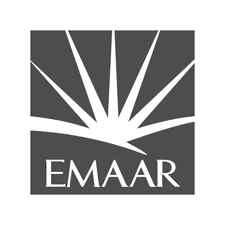
According to a statement from Dubai Media Office, the Business Bay area witnessed the most real estate transactions in the emirate last year, with 10,853 transactions.
Other areas with the highest number of transactions in the top ten included:
- Dubai Marina – 10,074;
- Al Barsha South 4 – 7,338;
- Burj Khalifa – 6,955;
- Al Merkadh – 6,133;
- Al Hebiah 5 – 5,868;
- Jebel Ali 1 – 5,242;
- Hadaeq Mohammad bin Rashid – 4,777;
- Al Thanyah 5 – 4,590;
- Palm Jumeirah – 4,183.
Content:
Reasons for Dubai's Success
The Dubai districts experienced a high level of real estate transactions in 2022, with good prospects for strong economic growth and expansion in the real estate market. Dubai's growing reputation as one of the best places to reside and work in, as well as its exceptional infrastructure, friendly regulations, and the high quality of services provided by Dubai Land Department (DLD), have all resulted in a rise in real estate transactions.
The exceptional performance of the sector makes an important contribution to the goals of the Dubai Economic Agenda D33 launched by His Highness Sheikh Mohammed Bin Rashid Al Maktoum, the Vice President and Prime Minister of the UAE and the Ruler of Dubai, to double the size of the emirate's economy by 2033 and strengthen the emirate's position as one of the world's top business locations.
Top Best Areas by Transaction Values
With over AED 47.1 billion in total transaction value in 2022, Wadi Al-Safa 3 ranked first, followed by:
- Palm Jumeirah – AED 40.48 billion;
- Nad Al Sheba 1 – AED 32.83 billion;
- Dubai Marina – AED 32.71 billion;
- Jebel Ali First Industria – AED 28.84 billion);
- Business Bay – AED 27.83 billion;
- El Merkadh – AED 23.08 billion;
- Burj Khalifa – AED 21.69 billion;
- Hadaeq Mohammed bin Rashid – AED 17.8 billion;
- Trade Centre First – AED 15.39 billion.
In Dubai in 2022, there were 122,658 registered real estate transactions worth AED 528 billion.
Dubai Land Department (DLD) has been working for several years to improve the emirate's real estate investment environment by providing impeccable services, implementing subsidiary rules, developing the digital eco-system, integrating various data sources through partnerships, and enhancing the capacity of its human resources to maintain the highest level of service quality. The sector is expected to grow in the future due to close collaboration between public and private stakeholders.







































